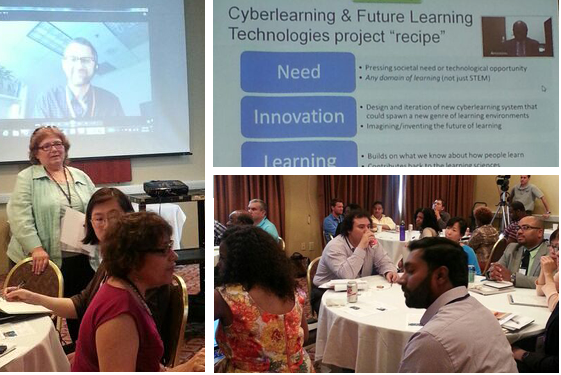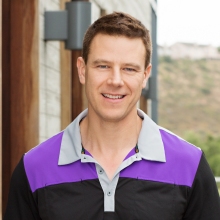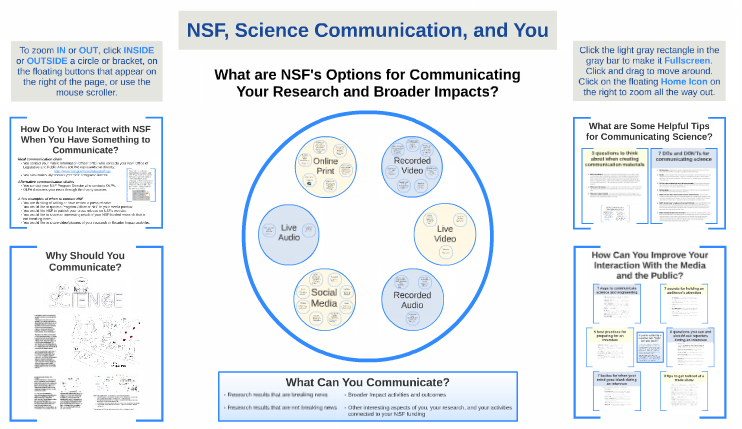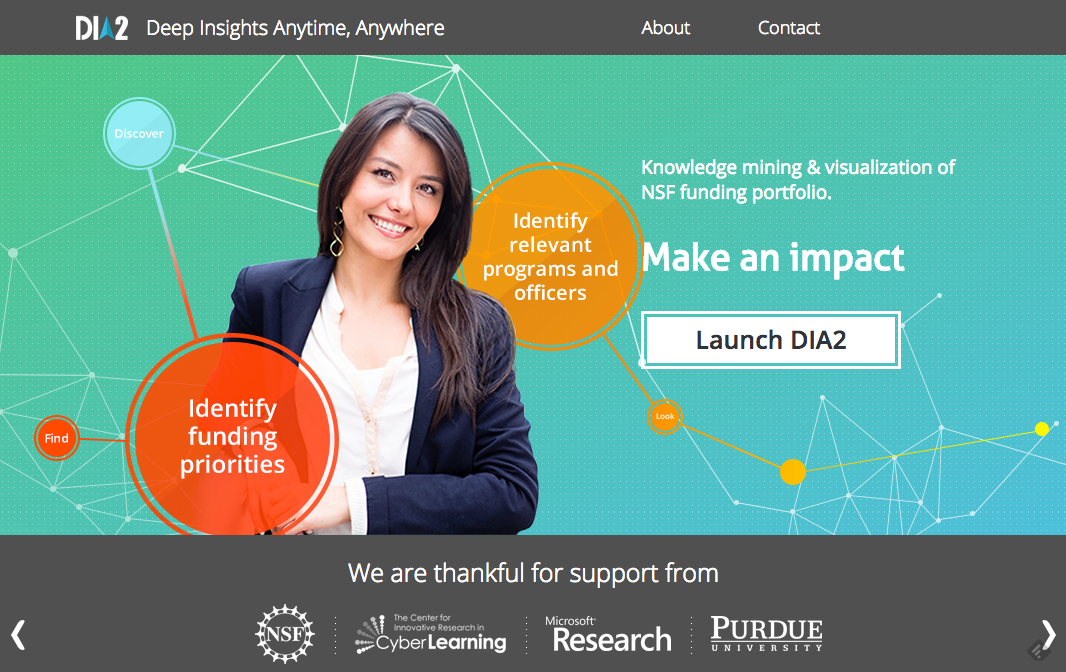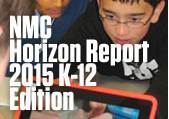CIRCL News: Cyberlearning 2016 January 25-26 in Arlington, VA
Hold the date! Cyberlearning 2016 will be held January 25-26, 2016 in Arlington, Virginia. CL16 will begin a shift from the very broad, community building focus of earlier meetings to more focus on external issues and problems where cyberlearning research could make an impact. In the 10-year vision, a Cyberlearning meeting would powerfully bring together a collection of research that addresses a problem seen as important by broad educational stakeholders. With this in mind, Cyberlearning 2016 will focus primarily on some key issues that the community has identified as ones on which the field could have an impact, such as:
- How can cyberlearning help young people build their identity and self-efficacy? Is there a social capital pathway that cyberlearning can help support?
- How can we design cyberlearning research so that it is informed by the real needs of formal and informal educators, and uses learning theory and innovative technology to address those needs? How can we involve educators and students as co-creators and partners in meaningful innovation?
A call for participation will be issued soon. Follow CIRCL on facebook or twitter or join the CIRCL announcement mailing list to receive updates between newsletters.
CIRCL Proposal Workshop Recap
In early June, CIRCL hosted the first in a two-part workshop series, Developing a Strong Cyberlearning Exploration (EXP) Proposal, designed to broaden participation in NSF’s cross-program Cyberlearning and Future Learning Technologies initiative. The two workshops, supplemented with proposal development coaching from experienced PIs, were designed to help people who have never had Cyberlearning funding develop strong Cyberlearning proposals. The workshop agenda, bios of participants and mentors, and videos of presentations and Q&A are available in the workshop archive.
The first workshop, held at Tuskegee University, focused on brokering and idea exploration and resulted in the 29 workshop series participants being matched with mentor PIs. The participants will work with their mentors to develop their proposals over the summer and fall leading up to the second workshop, which will be held in October 2015 and will focus on reviewing and refining proposal drafts.
A majority of participants (76%) attending this workshop included persons of color and/or represent minority or Hispanic serving institutions and tribal college, as a result of outreach that targeted a broad range of institutions, including minority serving institutions and communities. Based on participant feedback and impact of this workshop series in broadening participation in the Cyberlearning program, CIRCL will consider a second broadening participation workshop series next year.
New Calls: NSF CRII, Making EAGER; IES Virtual Learning Lab
NSF CISE invites proposals for the Research Initiation Initiative (CRII) program. This solicitation encourages potentially transformative proposals in any area of CISE research from PIs who are in their first academic position post-PhD. See FAQs about CRII. Proposals due September 30, 2015. Join the webinar for potential CRII applicants on August 5 from 1pm-2pm ET.
NSF has released a Dear Colleague Letter: Enabling the Future of Making to Catalyze New Approaches in STEM Learning and Innovation, a call for EAGER proposals around Making. Proposals are due December 17, 2015.
IES invites applications for a Virtual Learning Lab. The purpose of the 5-year, $10 million lab is to conduct rapid experiments designed to improve widely-used education technologies, and to explore how the large amounts of data generated from education technologies can be used to improve classroom teaching and learning. The lab will also provide national leadership on these issues through conferences, training, and other activities. Proposals are due August 20, 2015.
Featured Perspective: Meet Chad Lane
Chad Lane is an Associate Professor of Cognitive Science of Teaching and Learning at the University of Illinois at Urbana-Champaign. He was formerly Director of Learning Sciences Research at the USC Institute of Creative Technologies.
What drives your work?
I am simply curious about why and how learning works. I view these as critical scientific questions of our time and am passionate about research that addresses them. Visiting schools and interacting with young learners also fuels this passion. When I am lucky enough to spend time with kids, I have a three part message: Curiosity, Passion, and Knowledge. I try explain the “Dweckian” message that being smart is not innate – it is about a desire to engage in sensemaking and cultivating motivation. I also want to give students a big picture for where they’re going and think ahead, even if they may not be very good at it. Like all of us sometimes, kids can sometimes reject an idea outright, like saying they don’t like science––but they don’t realize how vast science truly is! There may a topic coming next week that they find amazing.
Read more of Chad Lane’s perspective.
Upcoming Conferences: ICLS, L@S, LAK, HICE, FabLearn
ICLS 2016, The 12th International Conference on the Learning Sciences (ICLS), Transforming Learning, Empowering Learners”, will be held June 20-24, 2016 at the National Institute of Education, Nanyang Technological University, Singapore. Papers, Posters, and Symposia due November 13, 2015.
L@S 2016, the Third Annual Meeting of the ACM Conference on Learning at Scale, will be held April 25 and 26, 2016 at the University of Edinburgh, Scotland. It will be co-located with LAK 2016. Full papers are due October 18, 2015.
LAK 2016, The 6th International Learning Analytics and Knowledge Conference, will be held at the University of Edinburgh, Scotland April 25-29, 2016. It will be co-located with L@S 2016. Submissions are due October 31, 2015.
HICE 2016, The 14th Annual Hawaii International Conference on Education (HICE) will be held January 3-6, 2016 in Honolulu, Hawaii. Submissions due August 8, 2015.
FabLearn 2015 will be held on September 26-27, 2015 at Stanford University. Registration opens on July 22, 2015. Last year, the event sold out in a matter of days, so early registration is recommended.
Project Spotlight: Learning Trajectories for Grades 6-8 Rational Number Reasoning
An interview with Jere Confrey about her Gates Foundation and NSF-funded project to build and validate learning trajectories for grades 6-8 mathematics around rational number reasoning.
What is the big idea of your project work?
Our team is working on an interactive learning map in for middle school math. This work is part of our Scaling Up Digital Design Studies (SUDDS) project work, with funding from NSF and the Bill & Melinda Gates Foundation. A learning map, in contrast to a straight disciplinary map, is a map that is based on research on learning and tries to delineate the landmarks/or obstacles that are essential to understanding a big idea. Our learning map helps teachers create personalized learning resources for students in middle grades math in a coherent way. It supports flexible grouping based on students’ choices, paths, and performance. Read more about Learning Trajectories for Grades 6-8 Rational Number Reasoning.
Cyberlearning Across NSF
A sample of new projects with a cyberlearning theme funded by programs across NSF.
- Interdisciplinary Coaching As a Nexus for transforming how institutions support undergraduates in STEM (iCAN), funded by DUE IUSE, S-STEM:SCHLR SCI TECH ENG&MATH. PI: Matthew Marino; Co-PIs: Brian Moore, Eleazar Vasquez, Manju Banerjee; University of Central Florida.
- Bringing Team-Based, Project-Based Learning to Scale, funded by DUE IUSE. PI: Eric Mazur; Co-PI: Laura Tucker; Harvard University.
- Collaborative Research: Faculty as Change Agents: Transforming Geoscience Education in Two-year Colleges, funded by DUE IUSE, S-STEM:SCHLR SCI TECH ENG&MATH. PIs: R. Heather Macdonald, College of William and Mary; Eric Baer, Highline Community College;Norlene Emerson, University of Wisconsin Colleges; Janet Hodder, University of Oregon Eugene.
- Zoombinis: The Full Development Implementation Research Study of a Computational Thinking Game for Upper Elementary and Middle School Learners, funded by DRL DRK-12. PI: Jodi Asbell-Clarke; Co-PIs: Elizabeth Rowe, Teon Edwards; TERC Inc.
- Collaborative Research: Improving Conceptual Understanding of Multivariable Calculus Through Visualization Using CalcPlot3D, funded by DUE IUSE, S-STEM:SCHLR SCI TECH ENG&MATH. PIs: Paul Seeburger, Monroe Community College; Monica VanDieren, Robert Morris University; Deborah Moore-Russo, SUNY at Buffalo.
- C3PO: Customizable Computer Coaches for Physics Online, funded by DUE IUSE. PI: Leonardo Hsu; Co-PI: Kenneth Heller; University of Minnesota-Twin Cities.
- Implementing and Investigating Mathematical Modeling as a Means to Demonstrate the Interdisciplinary Nature of Science and Increase STEM Retention, funded by DUE S-STEM:SCHLR SCI TECH ENG&MATH, IUSE. PI: Cynthia Howard; Co-PIs: Sarah Powers, Jerry Kavouras, Ray Klump; Lewis University.
- Promoting the Development of Metacognition and Combating Robust Misconceptions In a Gateway STEM Course Using an Intelligent, Web-based Homework System, funded by DUE IUSE. PI: James Becker; Co-PIs: Katharine Polasek, Rockford Ross; Montana State University.
- SimScientists Games: Development of Simulation-Based Game Designs to Enhance Formative Assessment and Deep Science Learning in Middle School, funded by DRL DRK-12. PI: Edys Quellmalz; Co-PIs: Mark Loveland, Daniel Brenner, Matt Silberglitt; WestEd.
- Collaborative Research: Multimedia learning principles for design-it-yourself online instruction of GIS concepts, funded by DUE IUSE, S-STEM:SCHLR SCI TECH ENG&MATH. PIs: Richard Mayer, University of California-Santa Barbara; Jeffrey Howarth, Middlebury College.
- Collaborative Research: Leveraging “Big Data” to Explore Big Ideas: Utilizing the Paleobiology Database to Provide Hands-on Research Opportunities for Undergraduates, funded by DUE IUSE, S-STEM:SCHLR SCI TECH ENG&MATH. PIs: Mark Uhen, George Mason University; Rowan Lockwood, College of William and Mary.
Job Opportunities
IES is recruiting a program officer to lead their education technology portfolio. The job involves working with researchers to develop research proposals and monitoring the progress of research grants that focus on the use of education technologies to improve student academic outcomes in K-12.
Resource & Tech Corner
NSF’s Science Communication Toolkit for Principal Investigators helps you communicate the excitement and value of NSF-funded research. The tool showcases all of NSF’s communications vehicles with descriptions and examples, statements on the importance and benefits of science communication, suggestions for communicating effectively, and the ideal communication chain between principal investigators, NSF program directors, and university public information officers.
A new release of DIA2 is now available. DIA2 supports knowledge mining and visualization around the NSF portfolio to help you tailor your proposal to NSF. DIA2 can help you identify relevant programs and officers; view connections among researchers based on their collaboration on NSF projects; identify core research groups in specific problem areas; view funding trends by NSF program, institution, topic, or geographic location; and access project abstracts. Use this information to identify potential collaborators, identify funding gaps, and target your proposal to the appropriate NSF division. “Get inspired. Get Help. Get funded.”
The Connectory is a free online collaboration tool for STEM program providers to find partners based on interests as well as a platform to showcase your STEM opportunities to families. Register your program at www.theconnectory.org
The NMC Horizon Report > 2015 K-12 Edition describes emerging technologies likely to have an impact on learning, teaching, and creative inquiry in K-12 education. This edition address questions such as: What is on the five-year horizon for K-12 schools worldwide? Which trends and technologies will drive educational change? What are the challenges that we consider as solvable or difficult to overcome, and how can we strategize effective solutions?
Articles & Publications
Have a recent publication or article about your cyberlearning project, or that you think the community should know about? Let us know and we’ll announce it here!
Koedinger, K. R., D’Mello, S., McLaughlin, E. A., Pardos, Z. A. and Rosé, C. P. (2015). Data mining and education. WIREs Cogn Sci, 6: 333–353.
Erica Halverson and Kimberly Sheridan and their research team published a symposium in the Winter 2014 issue of the Harvard Educational Review on the Maker Movement based on findings from their NSF Cyberlearning grant, Learning in the Making, that includes an essay on the Maker Movement in Education, a comparative case study on their work, and a piece on making with e-textiles by Kafai, Fields & Searle.
Check out the latest Cyberlearning Educators’ Corner blog post, Exploring New Worlds: A Teacher Attends an Academic Conference, by Mary Patterson, Albert Einstein Distinguished Educator Fellow.
Building the 21st Century Scientist, a special issue of Nature, in collaboration with Scientific American, is taking a look at the challenges in STEM education and what is needed to grow the next generation of scientists.
Share Your News
Have some news (project highlights, job opportunities, RFPs, calls, etc.) that you want to share? Contact CIRCL.
CIRCL is supported by NSF grants IIS-1233722 and IIS-1441631. Any opinions, findings, and conclusions or recommendations expressed in this material are those of the author(s) and do not necessarily reflect the views of the National Science Foundation.

